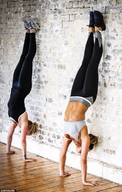How to minimise your risk of injury at the gym

Some of the most common injuries that can arise if you do not stretch sufficiently include sprains, muscle strains, meniscus tears of the knee, rotator cuff tears and tendinitis. Sprains occur when a ligament connecting bones to one another becomes injured due to overstraining. Muscle strains are injuries to the muscles that connect the bones to the muscles. Meniscus tears to the knee occur when a rip appears in one of the several ligaments that are supposed to stabilise the cartilage that protects the joint of the knee. Rotator cuff tears occur on the sockets of the body when muscles or tendons that hold the arm in place become damaged. Finally, tendinitis is caused by overuse of a specific tendon and it results in pain and inflammation.
Before starting a new exercise regime, whether it be general gym sessions or more specific sports like boxing or running, make sure you speak to your doctor if you have any preexisting health conditions. Your doctor will be able to give you advice on how to integrate a healthy and reasonable exercise plan into your day to day life without endangering your health.
Ensure you have been taught the correct techniques for an exercise before launching into it. Good form in the gym is vital when weightlifting or moving your body into unnatural positions and if it is lacking one can suffer serious repercussions and be unable to exercise for weeks. Ask a trainer or an experienced gym-goer to help you perform an action correctly rather than guessing how to do it yourself.
Ensure you purchase the correct gym get before starting your new exercise regime. Depending on the type of exercise you plan to do, you may need to purchase different exercise equipment. For example, those interested in running need to purchase running shoes that fit your feet and support your running style.

